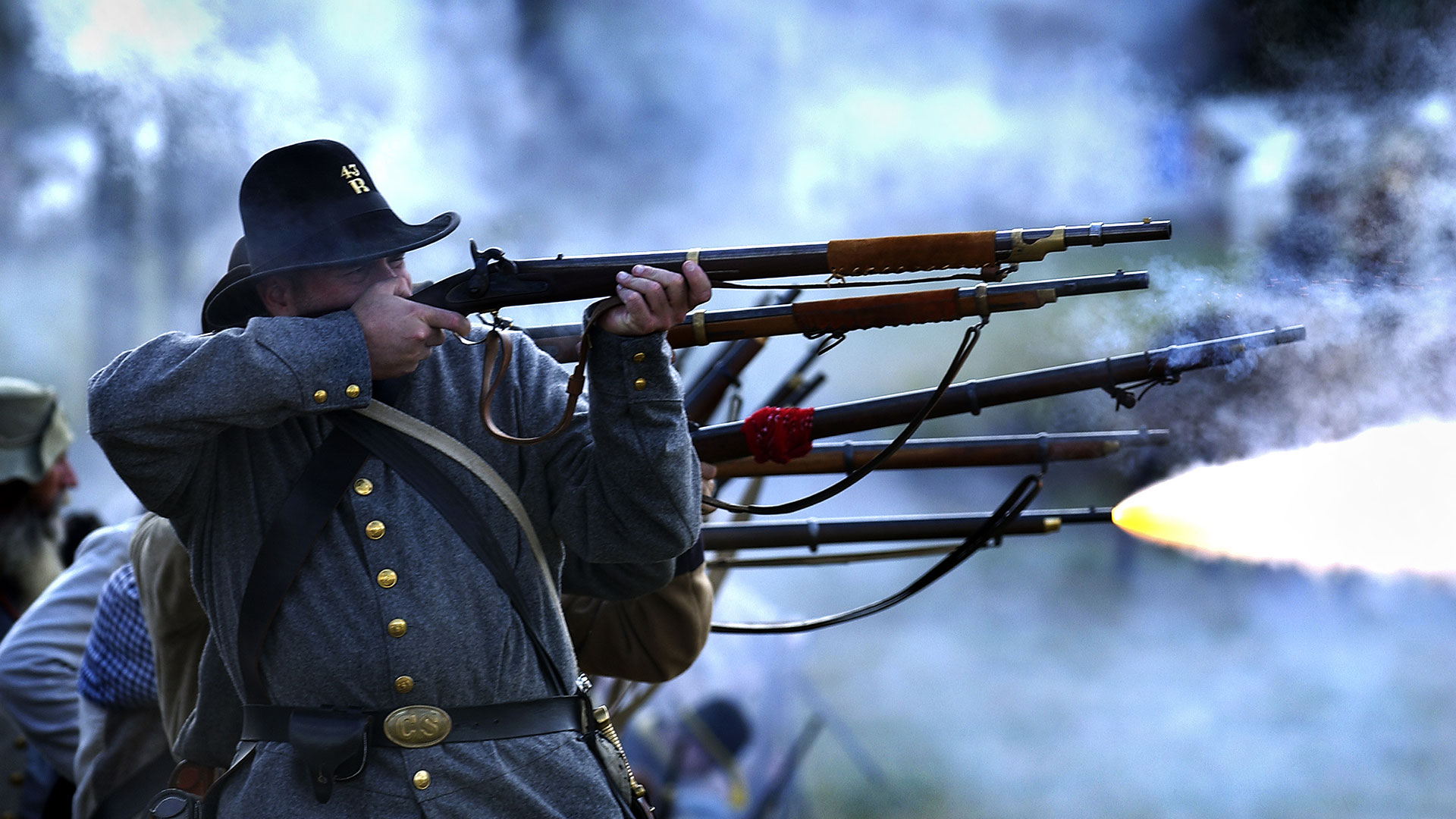If these fields, these walls could talk, they would tell of a time when the sounds of cannons and military weaponry shook the ground. A time when family homes became Civil War hospitals and farmers’ fields became battlegrounds. Tennessee pulls the curtain back on this piece of history through preserved battlefields, plantation homes that sat on the frontlines and through visual storytelling that recreates the military formations and strategies used for victories. Add these Civil War destinations to your travel list to see for yourself.
Chickamauga & Chattanooga National Military Park, Chattanooga
Visit the place where Union and Confederate soldiers fought for ownership of Chattanooga, considered the “Gateway to the Deep South.” Union soldiers took complete control of the city in November 1863. Learn the story of the “Battle Above the Clouds” through its 1,400 monuments and historic markers, the indoor exhibits and exploration of the nearly 10,000 acres (4,000 hectares).
Carnton Plantation, Franklin
A private home, thrown into the brutality of the Civil War and converted into a battlefield and hospital in the matter of a few hours. It was the site of the Battle of Franklin which resulted in 9,500 soldiers killed, wounded, captured or missing. The home bears the scars of the battle on its second floor and is the site of the McGavock Confederate Cemetery.
Dickson-Williams Mansion, Greeneville
Walk through the Federal-style mansion and learn the story of the family who lived under a house divided: a daughter married a former U.S. congressman, two sons who were Confederate soldiers and another who was a Union soldier. Hear stories of how both Union and Confederate generals were invited to the home when they were in town and Confederate General John Hunt Morgan’s death on the property.
Fort Pillow State Historic Site, Henning
Trace the steps of Confederate troops who built the fort in 1861 along the steep bluffs of the Mississippi River. The 1,642-acre (665-hectare) fort has a reconstructed inner fort and well-preserved breastworks. Browse the Civil War artifacts and interpretive displays to learn the full history behind Fort Pillow. There’s even a 12-minute video about the 1864 battle that can be viewed on request.
Mabry-Hazen House, Knoxville
Listed on the National Register of Historic Places, Mabry-Hazen House has a rich Civil War history. The home served as headquarters for both Union and Confederate armies. One of the largest original family collections in America can be seen with more than 2,000 artifacts. Take a tour to hear some of the colorful stories attached to the house.
Stones River National Battlefield, Murfreesboro
Before exploring the grounds, head to the visitor center to see interactive exhibits of first person accounts of the battle, a film about the battle and a bookstore. Once you learn the impact of the Battle of Stones River—that left 3,000 men dead and nearly 16,000 wounded—see the battlefield yourself. Seven miles of trails are located throughout the park along with interpretive signs and cannons to give visitors a glimpse of what happened on the hallowed grounds. Tour the Stones River National Cemetery to see the more than 6,100 Union soldiers buried there.
Historic Travellers Rest Plantation and Museum, Nashville
Historic Travellers Rest is considered the oldest house museum open to the public in Nashville. Built in 1799, the plantation saw Union troops camp on the property and had served as Confederate headquarters to General John Bell Hood two weeks prior to the Battle of Nashville. John Overton, owner of Travellers Rest, fled the plantation when a $5,000 bounty was placed on him for refusing to swear oath to the Union. He returned in 1862 when the Confederates arrived at Travellers Rest.
Shiloh National Military Park, Shiloh
Take a tour of the visitor center where the historic guides have done a wonderful job with the documentary on view and the exhibits of the battle formations and weapons used to help guests grasp the magnitude of the largest engagement in the Mississippi Valley campaign during the Civil War. Monuments, statues and the preserved battlefields can be seen throughout the park. Stop at the National Cemetery, where 3,584 Civil War dead (of the 23,000 casualties of that battle) were laid to rest and remembered with tall stones engraved with the known dead, and short stones representing unknown soldiers.




